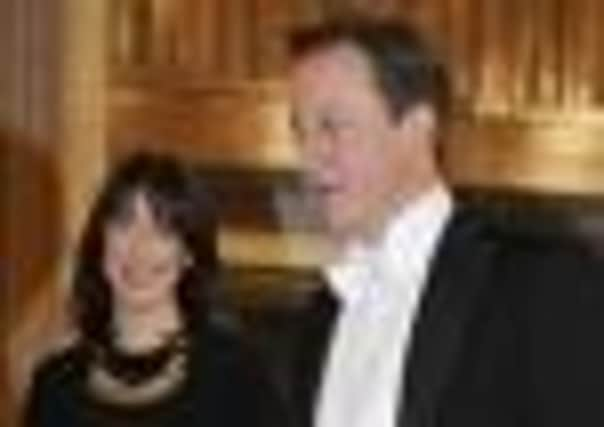Why white tie wouldn’t suit Cameron’s political message


David Cameron’s decision to wear a lounge suit at the wedding of Prince William and Kate Middleton has caused a bit of a stir.
By opting for his normal business attire, and shunning a formal morning suit, he will become the first Prime Minister in history to attend a royal wedding without wearing tails.
Advertisement
Hide AdAdvertisement
Hide AdIn choosing to wear a lounge suit, an option which has been given to all of the invited guests, he is likely to be out of step with visiting heads of state and members of foreign royal families, most of whom are expected to wear full morning dress or their country’s traditional robes.
He’s not the only politician expected to break with tradition at next week’s ceremony at Westminster Abbey, with both the Deputy Prime Minister, Nick Clegg, and Labour leader, Ed Miliband, understood to have opted for normal suits.
Mr Cameron is not the first political leader to shun the white tie in favour of his working clothes. During his 10 years as Chancellor, Gordon Brown refused to conform to satorial tradition at official functions, choosing to wear a lounge suit at Mansion House dinners, although this changed after he moved into Number 10.
In the past, though, it has been traditional for prime ministers to wear full morning dress – including a tail coat – when they attend Royal weddings. However, Mr Cameron has bristled at accusations from his political opponents that he is a “toff”.
Advertisement
Hide AdAdvertisement
Hide AdAs a student at Oxford University, he was famously photographed in the bow tie and tails of the infamous Bullingdon Club – a dining group for ex-public schoolboys, which was renowned for its drunken excesses. But since becoming Conservative leader in 2005, the Old Etonian has been careful to avoid drawing attention to his privileged background.
“I think seeing David Cameron in tails would remind people of his days in the Bullingdon Club, which is something he probably wants to disassociate himself from, so that could be one reason why he’s chosen to wear a normal suit,” says Iain Aitch, author of two books on Britishness and Englishness. “But we are moving towards a less formal way of dressing in many areas of society and fashion changes with time and it’s fashion we’re talking about here. What he wears isn’t going to affect his ability to do his job properly.”
So why has his decision to wear a working suit led to so many raised eyebrows? If he was planning to turn up in a white tuxedo and a pair of moccasins looking like the man from Del Monte, then fair enough. But given the fact that all eyes will be on Kate Middleton’s dress, does it really matter what David Cameron is wearing?
Angela Marshall, who runs image consultancy, Appearance Management, believes it does.
Advertisement
Hide AdAdvertisement
Hide Ad“If you are the chief executive of a company you should lead by example and that’s what the government and its leaders should be doing. This is the biggest wedding of 2011, foreign dignitaries and royal families from all over the world will be there and he’s representing this country and I think choosing something less formal and trying to appeal to the public is wrong. People like to dress up.”
Efrat Tseëlon, chairwoman in fashion theory at Leeds University’s School of Design says although clothes don’t represent people’s social status in the way they used to, formal events like Royal weddings are still laden with class imagery.
She believes by choosing a lounge suit the Prime Minister is making a deliberate political statement.
“There are elections coming up and he is aware that these are harsh economic times and doesn’t want to associate himself with the class-related ritual which is associated with wearing tails.”
Advertisement
Hide AdAdvertisement
Hide AdHowever, many notable figures became synonymous with their attire. During state visits Mahatma Gandhi wore his trademark robes, while Che Guevara famously turned up at the UN in New York wearing his army fatigues and nobody batted an eyelid.
But in Britain the clothes our political leaders wear can come back to haunt them, as Michael Foot found to his cost when he made what became an infamous appearance at the Cenotaph on Remembrance Sunday in 1981 wearing a so-called “donkey jacket.”
In actual fact, the then Labour leader was wearing a new coat his wife had bought from Harrods and which the Queen Mother had complimented him on, but the damage had already been done.
As Mark Twain once observed, it’s clothes that make the man.